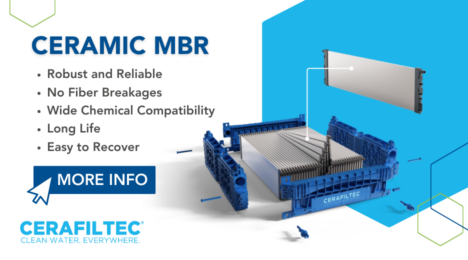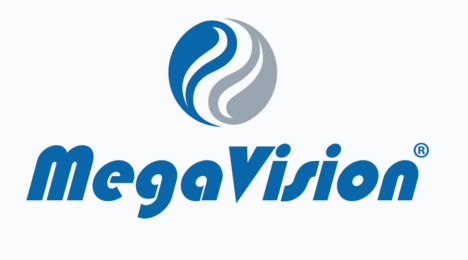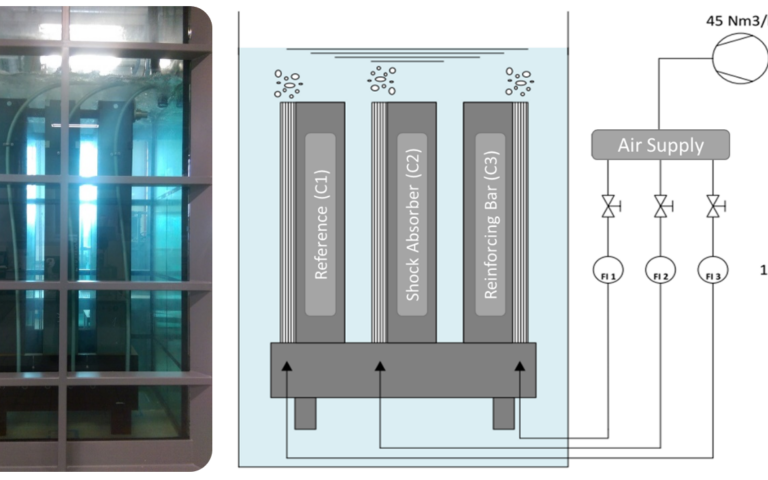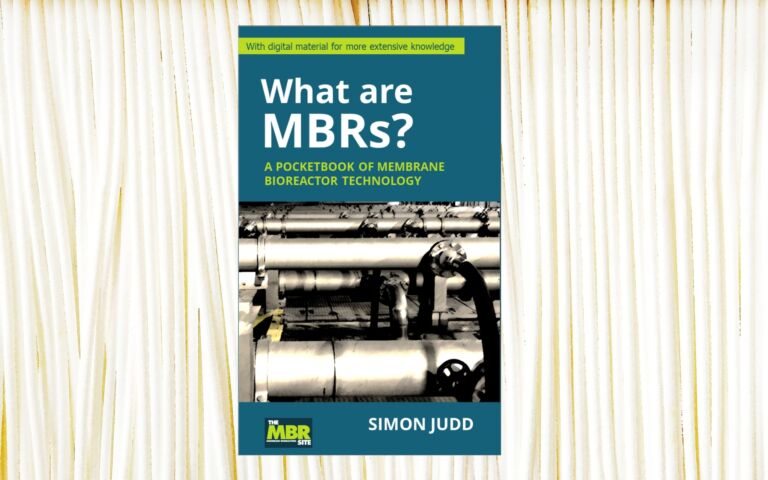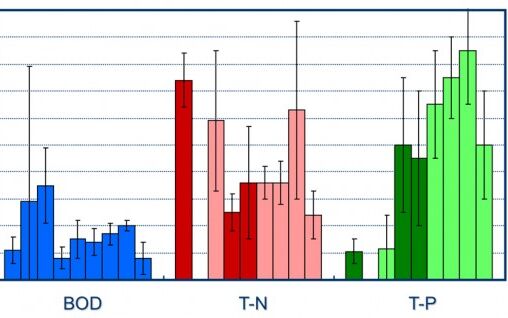How advanced CFD modelling accelerates and improves the design and scale-up of membrane applications


Wim Audenaert1 (pictured right), Usman Rehman1, Wouter Naessens2, Ingmar Nopens1,2
- 2BIOMATH, Ghent University, Belgium
Most water practitioners today recognise Computational Fluid Dynamics (CFD) as a means of realistically simulating 3D flow within a reactor or treatment process, largely based on fluid physics. Design and/or operational aspects of the process can be adjusted virtually to obtain the desired system and understand what is happening inside it. Today’s models and computational power allow for direct coupling of process phenomena (such as bubbles, particles and reactions) with CFD. This has created new opportunities for carrying out key tasks virtually, including experimenting, prototyping, and piloting/scale-up. This article addresses the concept of 'advanced CFD' and illustrates its potential using three very different membrane-related examples.
1. The current status of CFD
A water/wastewater treatment process can be governed by many phenomena (Fig. 1). The technology designer’s role is to control these phenomena as much as possible in a well-designed treatment process. But, as the figure shows, there are many design and operational variables. To physically test all of them (and their combinations), is costly and practically infeasible: an informed selection is often required.
In the case of MBRs, typical design variables are (a) the membrane configuration (dimensions, spacing and location), and (b) the inlet and outlet positioning and design of the aerators (optimal bubble size and number of aerators and their position).

Compared to ‘plain CFD’ which only considers the hydraulics, advanced CFD takes into account one or more of the process phenomena, including both the biochemical reactions and the different phases (Fig. 2). This then leads to very realistic 3D models that can complement, reduce or replace physical experimentation. For example, CFD combined with biokinetics will not only shed light on potential ‘dead zones’ but also on permeate quality (e.g. ammonia levels) as function of operation and design. The complexity of the model (i.e. which process phenomena to include) must be chosen in line with well-defined objectives (i.e. a desired quality/limit, energy consumption, footprint, capacity, etc.). Advanced CFD can be demonstrated with reference to three different case studies where the aim was to virtually design or scale-up MBR technologies.

2. CASE I: Virtual scale-up of a baffled MBR (BMBR)
The baffled MBR (BMBR) concept is a novel MBR reactor type having a single reactor compartment (see Maezawa Industries, Inc.). This avoids pumping between aerobic and anoxic zones and minimizes the requirement of a mixer for the anoxic zone, thereby reducing pumping and mixing costs. Advanced 3D modelling was used to virtually scale-up an existing 15 m³/d pilot to a well-performing 400 m³/d large-scale installation within a few months without additional piloting. The CFD model accounted for fine and coarse bubble aeration, high sludge concentration and biokinetic conversion of COD and nutrients.
2.1 The BMBR concept
The BMBR operates in cycles (Fig. 3): wastewater is intermittently introduced while permeate exits the system continuously. This produces alternately rising (while feeding) and falling (during membrane filtration) system water levels throughout the cycles, with one cycle typically taking ~10−20 minutes.

The hollow-fiber MF membranes are located in the middle of the reactor and both fine and coarse bubbles are introduced under the membranes for aeration and scouring respectively (Figs. 3−4). The 3D baffle surrounding the membrane creates alternating aerobic and anaerobic regimes in the outer compartment throughout the cycles. If the water level is higher than the baffle height, oxygen and nitrate formed as a result of nitrification inside the baffle can enter the outer region. At low water levels oxygen depletion occurs and hence denitrification is promoted at the outer region.
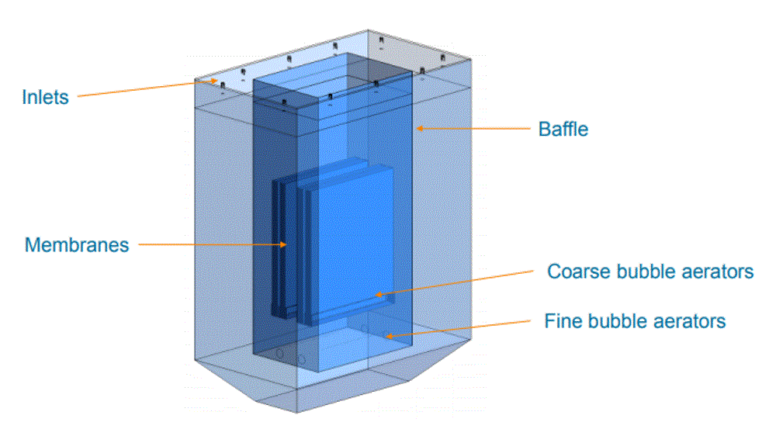
2.2 The scale-up challenge
Trial-and-error based scale-up of this BMBR is challenging because of the many operational and design variables requiring optimisation (Table 1). Determining the optimal combination of these variables through physical piloting would have been costly and time consuming, while testing freedom would have been very limited. Virtual piloting offered an elegant solution since many different designs (five in this case) could be rapidly tested.
| Operational variables | Design variables |
|---|---|
| Filling time | Number of inlets |
| Emptying time | Reactor shape |
| Minimum level | Reactor dimension and ratios |
| Maximum level | Baffle height and ratios |
| Aeration rate (both fine and coarse bubbles) |
2.3 The advanced 3D model
All the variables in Table 1 were tested using an advanced 3D CFD model simultaneously accounting for:
- hydrodynamics
- sludge density, associated with the solids concentration
- coarse bubble aeration
- fine bubble aeration
- biokinetics (biological organic matter and nitrogen removal)
- the cyclic (‘transient’) behaviour.
This model provided 3D profiles of air, carbon (BOD and COD), oxygen and nitrogen species both inside the reactor and the permeate. After successful model validation using the operating pilot-scale system, the model was ready to use for virtual piloting. Examples of typical simulation results are given in Figures 5 and 6 for gas holdup.
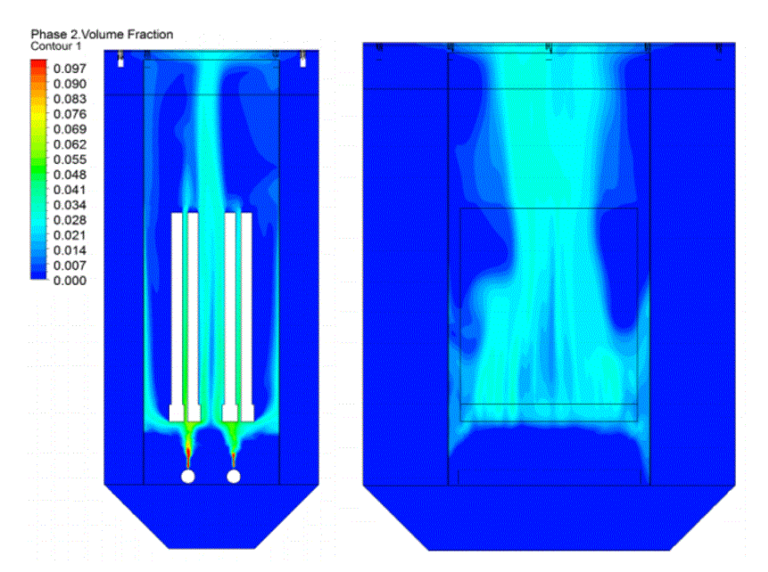
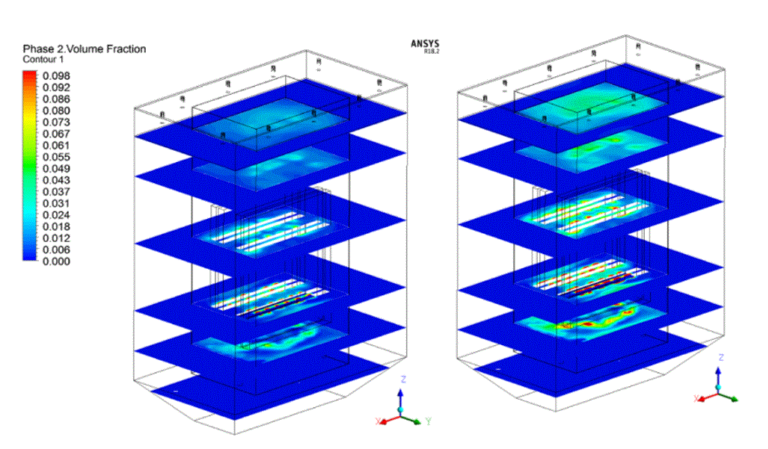
2.4 Virtual piloting: designing the optimal large-scale MBR by computer
Different design scenarios were trialled, whereby many combinations of the operational and design variables in Table 1 were virtually tested. A final ‘hybrid’ design (i.e. a design based on a combination of the variables) led to satisfactory permeate quality. It became clear (Fig. 7) that, although all the different candidate designs had identical treatment capacities, performance varied significantly. This demonstrates the importance and value of the flexibility provided by virtual testing.

2.5 Conclusions
Using virtual scale-up, Maezawa Industries, Inc. obtained a promising full-scale design within a ten-week period without additional physical piloting. The validated advanced 3D model provided sufficient confidence to build the large-scale BMBR suggested by the model. Preparations are currently ongoing. The project was conducted by AM-TEAM.
3. CASE II: Virtual design of a novel flat sheet MBR module
The Belgian company Blue Foot Membranes has commercialised the IPCTM ('Integrated Permeate Channel') membrane: a fully backwashable flat sheet membrane. Advanced 3D modelling was used to optimise the air scouring over the membranes and across the module. Eight different virtual prototypes with varying aerators and aerator configurations were evaluated within a few weeks without the need to build and test physical prototypes. The model accounted for fine or coarse bubble aeration, high sludge concentration and flow patterns (i.e. shear) along the membrane surface.
3.1 The IPC technology and modules
The IPCTM permeate channel consists of an open 3D spacer fabric on which the membrane layers are directly coated. This mechanical anchoring of the membrane in the fabric allows for rigorous backwashing up to 2 bar. The individual flat sheets are placed in modules (Figures 8a and b) that contain different aerators at the bottom (Figures 8b and c).
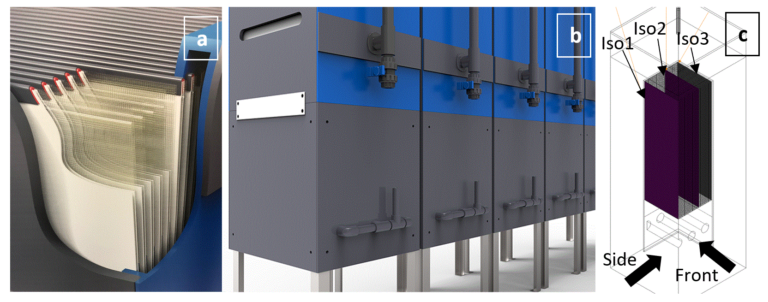
3.2 The design challenge
Blue Foot Membranes wanted to maximise air scouring performance across the whole module, on every membrane, since non-optimised scouring (i.e. shear) could lead to local fouling. Building physical prototypes to extensively test all the operational and design variables (Fig. 9) was impractical. Virtual testing offered a more feasible solution.

3.3 The advanced 3D model
All of the variables depicted in Figure 9 were tested using an advanced 3D CFD model simultaneously accounting for:
- hydrodynamics
- sludge density (as MBRs have high MLSS levels within a wide range)
- either coarse or fine bubble aeration
- accurate shear flow simulation and shear calculation between the flat sheets.
This realistic model provided 3D profiles of air and water flows (Figure 10) and visualised and quantified the local shear on every individual membrane sheet (Figure 11).


3.4 Virtual testing: designing the optimal module by computer
In this case, shear over 30+ membrane sheets had to be clearly visualised and presented, such that design decisions could be taken. Using Rehman-Nopens curves, the 3D CFD results were translated to clear 2D graphs. These curves are cumulative representations of all local shear values on the 30+ membrane sheets (Fig. 12).

As seen in Figure 12, coarse and fine bubbles differed significantly both in terms of shear distribution over the different sheets and over one individual sheet. Using finer bubbles, local fouling would be less likely to occur. Some extra virtual ‘what if’ design scenarios with fine bubbles were tested whereby the aerator configuration was optimised to further improve the curves in Figure 12a (results not shown).
3.5 Conclusions
Using virtual design, Blue Foot Membranes obtained an optimised IPCTM membrane module in a few weeks without additional physical testing. 3D CFD results were translated into 2D Rehman-Nopens curves that were used to guide the virtual design iterations. In a forthcoming project, the model will be validated and used further to optimise other design aspects. The project was conducted by AM-TEAM.
4. CASE III: Virtual dissection of helix technology
Pentair developed ‘twisted’ membranes, by introducing a helical ridge inside tubular ultrafiltration membranes to promote turbulence through helical flow (Fig. 13). This ridge increases productivity and reduces energy costs accordingly. An advanced CFD model demonstrated the exact physics behind this improved design and thereby provided useful information for further optimisation. CASE III is a somewhat more fundamental study executed at Ghent University.
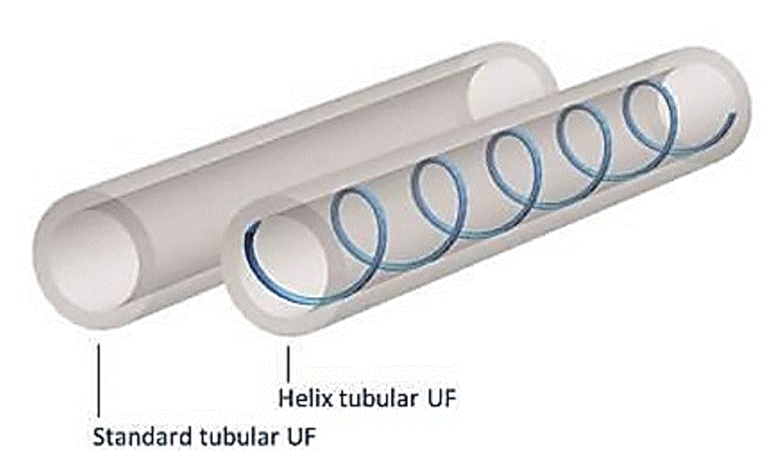
4.1 The design challenge
CFD can help in identifying the key mechanisms of this design, after which it can be used to optimise the turbulent energy distribution for fouling abatement. Although the principle of this design may seem intuitive, there are a number of possible mechanisms through which this design delivers its efficiency, including shrinking the laminar boundary layer, turbulent eddies diminishing the concentration gradients, increased shear stresses at the membrane, increased flow velocity, etc. Factors included in this exercise were both operational parameters (cross flow velocity and flux), and design parameters for the membranes (tube diameter) and for the helix (pitch, ridge height, cross sectional shape).

4.2 The advanced 3D model
To investigate the impact of this small-scale structure on e.g. the developed turbulence, a more detailed CFD approach than usual was applied. This so-called Large Eddy Simulation quantified local velocities very accurately. The main flow characteristics were unravelled from these results, pointing towards higher wall shear stresses near the membrane as a dominant mechanism for fouling control. It can be seen from Figure 15 that the membrane with the helical ridge gives rise to a broader distribution of shear values which are also shifted to higher values compared with the standard membrane tube. The highest shear values were found on the helical ridge itself and the lowest in a shadow zone behind this ridge. These low values (around 6% of the total membrane surface) are even lower than what would be encountered in a normal tubular membrane and thus form a point of attention for potential fouling.

Furthermore, it was possible to calculate centrifugal force fields on hypothetical particles of around 50µm in size, indicating that the helix also gave rise to an extra and significant centrifugal force, pushing particles towards the membrane. This force was significant within this shadow zone, aggravating the existing ‘shadow zone’ effect (Fig. 16).
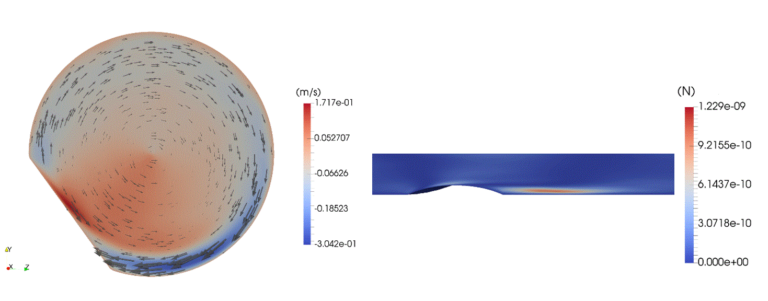
4.3 Virtual design: designing the optimal spiral shape by computer
Based on these results, recommendations can be formulated to improve the operation of tubular membranes with a helical ridge in terms of membrane fouling control. From an operational perspective, the periodic reversal of the main flow direction between filtration cycles would switch the high and low shear zones within the tubular membrane, altering the region of the shadow zone. From a more structural point of view, the shadow zone might be eliminated by employing an airfoil cross section (as of an airplane wing) to cover this zone and make the opening of the channel after the helical constriction less abrupt.
4.4 Conclusions
Using CFD simulations as a tool, it was possible to appraise the existing innovation of helical tubular membranes and identify the primary working principle of increased wall shear stress. While doing so, the limiting factor of the technology became apparent, offering the possibility of future design optimisation.
5. General conclusion
Current simulation tools are powerful and can realistically consider process phenomena on top of hydraulic flow patterns. This was shown based on three very different membrane-related case studies. Advanced CFD is increasingly used by technology developers and end users to optimise, design and scale up their technologies. 3D computer simulation can reduce, replace or complement real-life testing. Furthermore, it extends knowledge by providing high resolution data that cannot be collected with real-life testing. In MBR applications, the value lies especially in OpEx minimisation, footprint reduction, fouling control, optimisation of performance and the reduction of real-life experimenting and testing.




